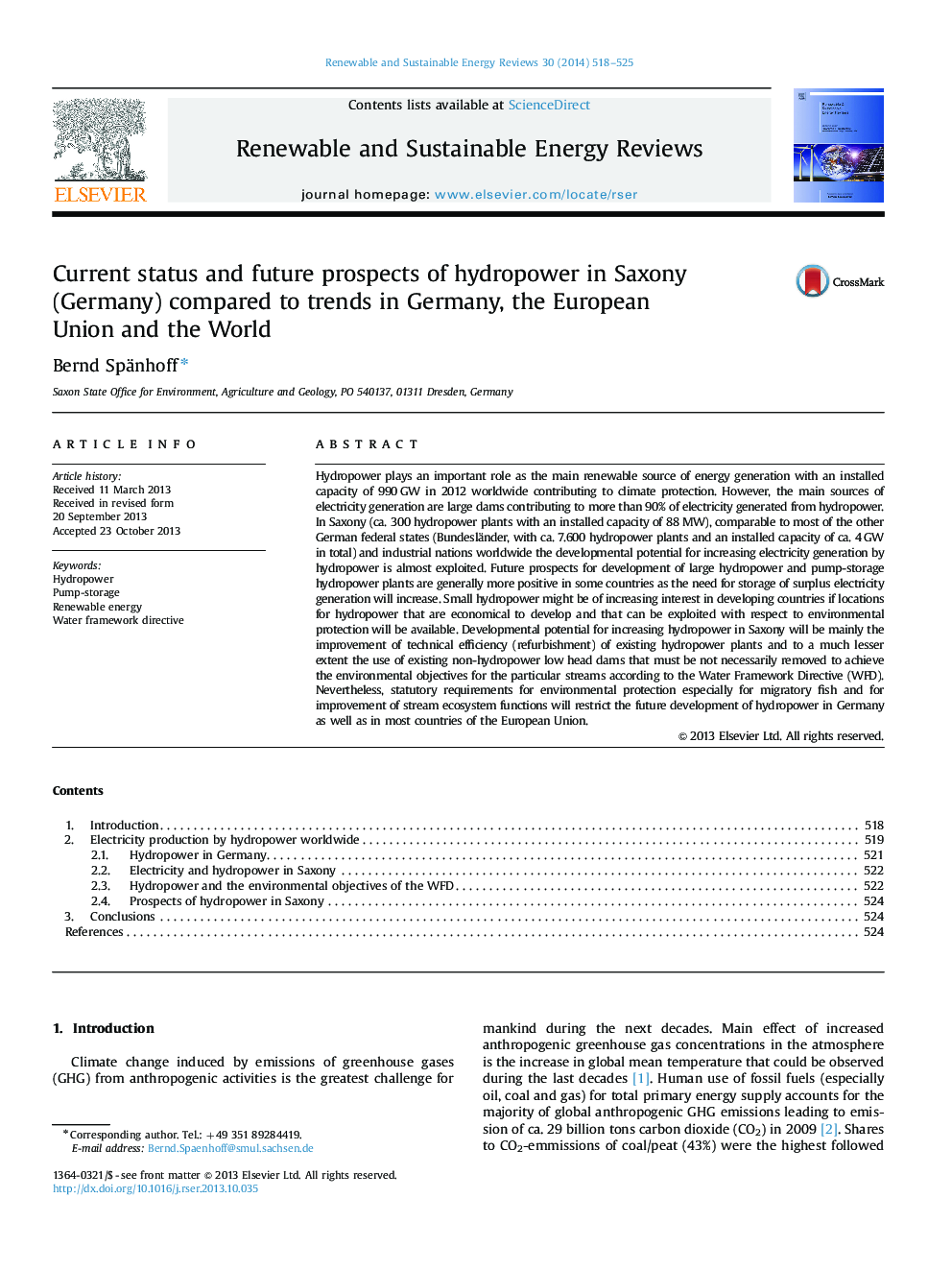| Article ID | Journal | Published Year | Pages | File Type |
|---|---|---|---|---|
| 8120550 | Renewable and Sustainable Energy Reviews | 2014 | 8 Pages |
Abstract
Hydropower plays an important role as the main renewable source of energy generation with an installed capacity of 990Â GW in 2012 worldwide contributing to climate protection. However, the main sources of electricity generation are large dams contributing to more than 90% of electricity generated from hydropower. In Saxony (ca. 300 hydropower plants with an installed capacity of 88Â MW), comparable to most of the other German federal states (Bundesländer, with ca. 7.600 hydropower plants and an installed capacity of ca. 4Â GW in total) and industrial nations worldwide the developmental potential for increasing electricity generation by hydropower is almost exploited. Future prospects for development of large hydropower and pump-storage hydropower plants are generally more positive in some countries as the need for storage of surplus electricity generation will increase. Small hydropower might be of increasing interest in developing countries if locations for hydropower that are economical to develop and that can be exploited with respect to environmental protection will be available. Developmental potential for increasing hydropower in Saxony will be mainly the improvement of technical efficiency (refurbishment) of existing hydropower plants and to a much lesser extent the use of existing non-hydropower low head dams that must be not necessarily removed to achieve the environmental objectives for the particular streams according to the Water Framework Directive (WFD). Nevertheless, statutory requirements for environmental protection especially for migratory fish and for improvement of stream ecosystem functions will restrict the future development of hydropower in Germany as well as in most countries of the European Union.
Related Topics
Physical Sciences and Engineering
Energy
Renewable Energy, Sustainability and the Environment
Authors
Bernd Spänhoff,
